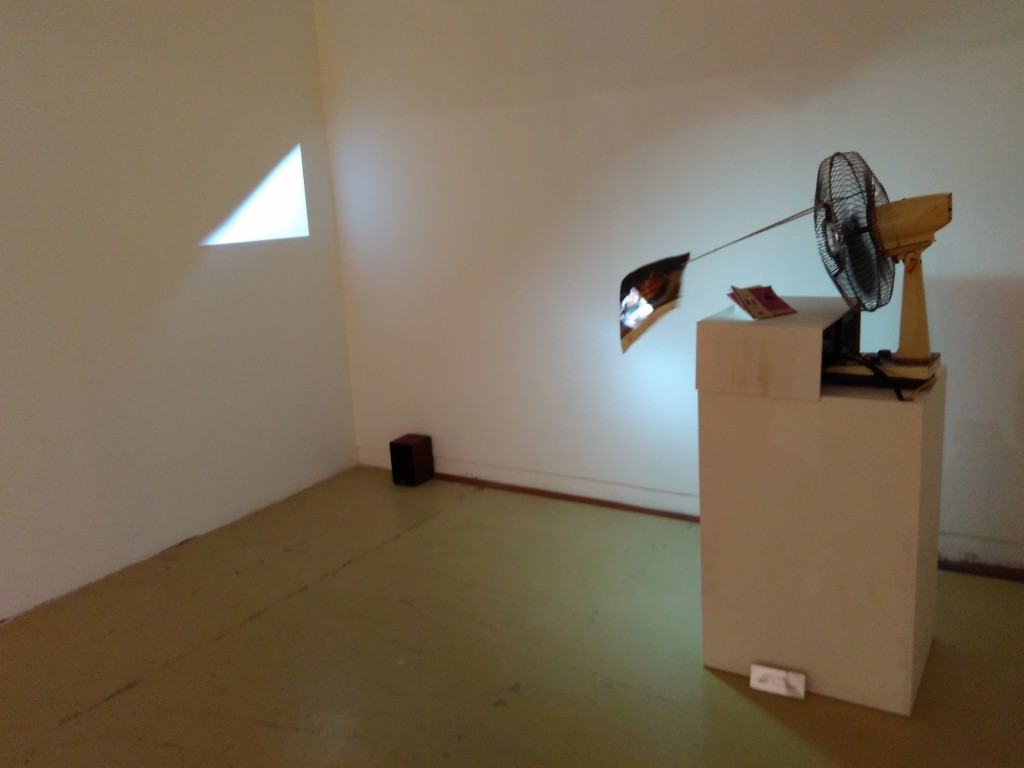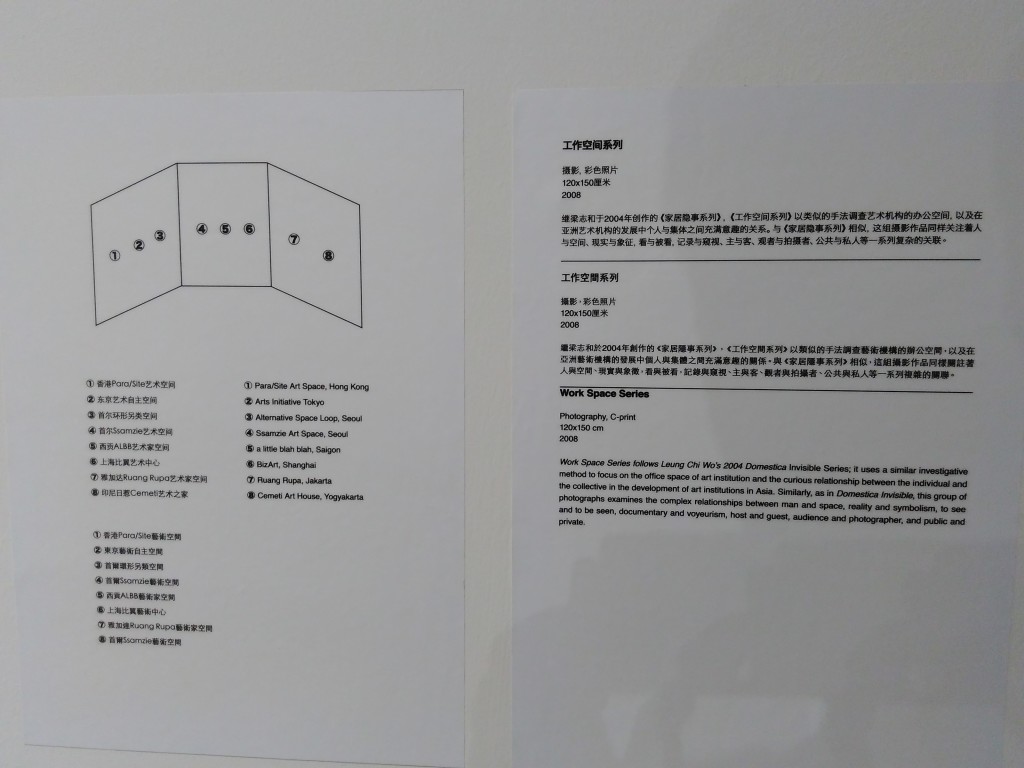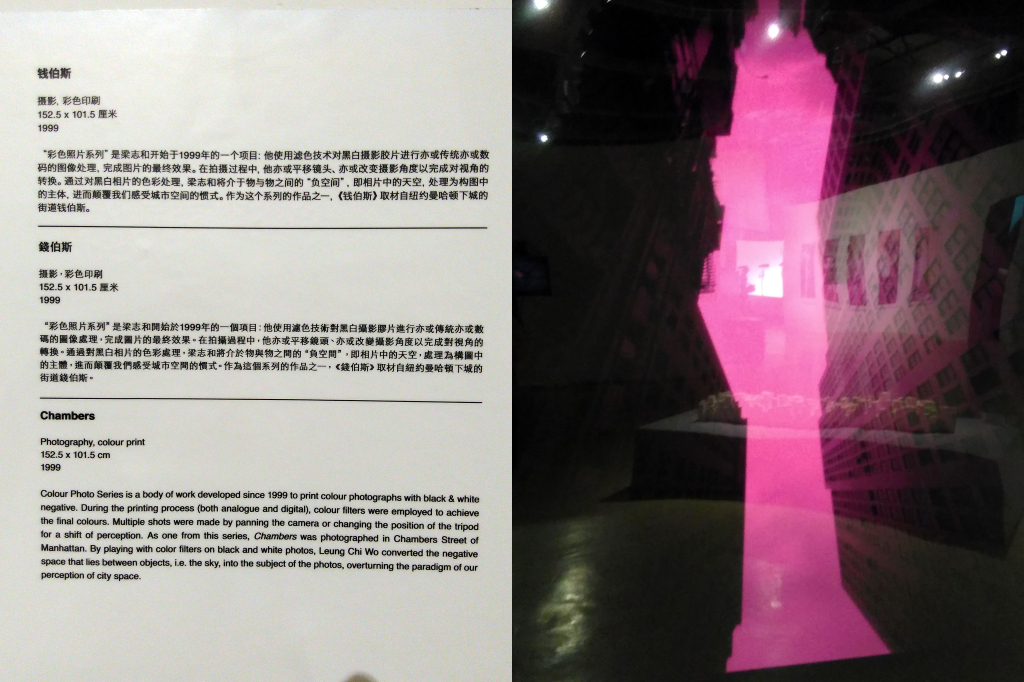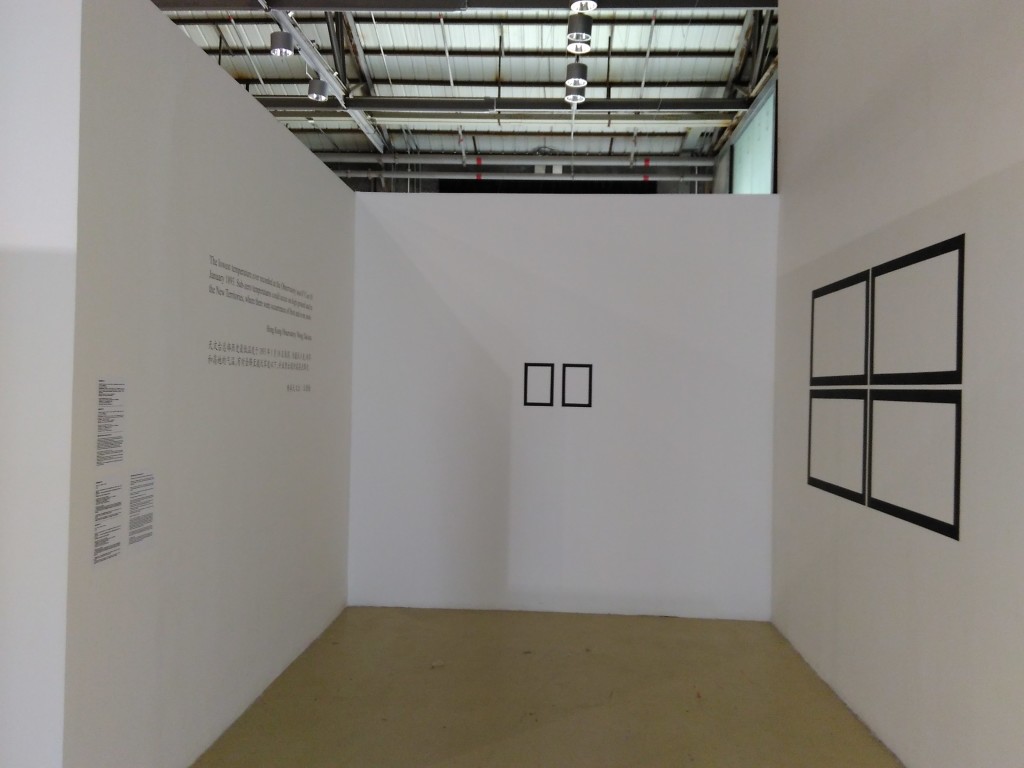April 25 – June 30, 2015; China, Guangdong, Shenzhen, Kaiping St, 华侨城创意文化园F1、F3、F4、E5栋OCAT, curator: Carol Yinghua Lu
What a beautiful and HUGE banner! I was a bit confused about the overall message conveyed by Leung Chi Wo’s show. Leung’s work seems to be about language most of all. More precisely about an impossibility communicate. About all the variants of language that exist even within one language. The slippages of tongue and the way how memory changes every word uttered right in the next moment.
Leung’s voice doesn’t appear his works. Neither directly nor metaphorically. It is almost exclusively others that speak. And if he ever speaks, then we do not hear his words, but someone else’s words, usually after being passed through a meaning-removal filter (like in the work where he reads an remade version of the Hong Kong Arts Center conditions of employment or another document related to some art exhibition, read backwards).
The message of the works does not seem to be in the medium, as the format is mostly common non-spectacular photos or talking heads on video. The message does not seem to be in the words uttered, as they are either stripped of meaning or reproduced as long takes of blabbering. If there is any intention, it is in the manipulation with other people’s voices. It’s like the questions posed by an interviewer to elicit certain responses from the interviewee.
In addition to posing questions, meaning can be manipulated and directed through providing context – a method embodied in the ever present long detailed textual captions that accompany each artwork. These captions usually explain very precisely what the artist did and what he meant by doing that. This seems to oppose the seeming openness of the works itself. The captions put the artwork in the position of an illustration of the artist’s intention. “Leung questions and investigates into forms and content of historic consciousness, memories, and narratives that are constructions in essence.”
One strange element that stood out in this show, was a number of “installations” where no artwork was present, only a space outlined with black masking tape. In these occasions, the caption took over completely, replacing the artwork, which was not even present anymore. As there was no caption explaining the captions and empty spaces on the walls, I was a bit confused: It could have been an artistic intention, it could have been artworks which were destroyed undocumented, or it could have been artworks which have been censored.
Overall, I had a feeling of an impossibility of communication. As if all the talking, all the office and private home still lives, all the memories where muted as soon as they parted from those who put them into being.








